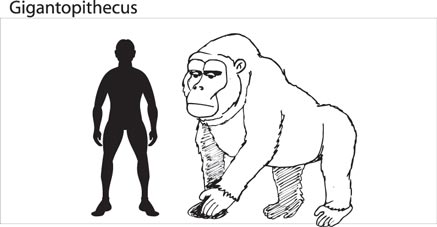Gigantopithecus Drawing
The original King Kong film was released in 1933. Merian C Cooper (who produced the film) along with Edgar Wallace (a crime fiction writer responsible for the screen play) wrote the story. The 1925 film “The Lost World”, based on the book of the same name by Sir Arthur Conan Doyle, heavily influenced their tale. An expedition explores a mysterious island “Skull island” with a gigantic ape known as Kong. Kong falls for the beautiful actress, who accompanied the expedition, when she is offered to Kong as a sacrifice. She is rescued, Kong is captured and taken to New York where the ape breaks from his shackles and meets his end on top of the Empire State building. “Beauty killed the Beast”.
The fossil record for primates and early human ancestors is very incomplete although there is no evidence to suggest that giant gorillas roamed the Earth. However, sometimes real life can reflect fiction, two years after King Kong was released a German palaeoanthropologist Ralph von Koenigswald purchased a very large molar (back tooth) from a Hong Kong pharmacy. Chinese doctors used “dragons teeth” fossils and bones found in remote caves in their traditional medicines. Koenigswald correctly identified that the tooth belonged to a new primate species. He went onto name the animal Gigantopithecus blacki. Gigantopithecus means “gigantic ape”, the scale drawing below gives an impression of the estimated size of a male G. blacki.
Gigantopithecus Illustrated
Picture credit: Everything Dinosaur



Leave A Comment